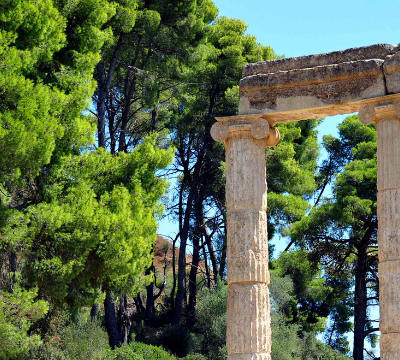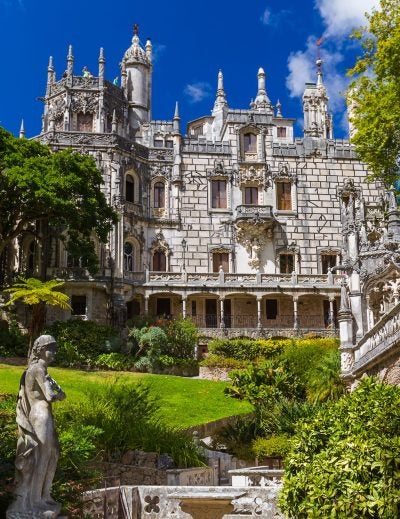
Ancient Theatre of Taormina: A Detailed Travel Guide
The Ancient Theatre of Taormina, or Teatro antico di Taormina, is one of Sicily’s most remarkable archaeological treasures. Perched high above the Ionian coast in the town of Taormina, this ancient structure combines breathtaking views with centuries of cultural history. It’s the second-largest ancient theatre in Sicily, after the one in Syracuse, and remains one of the island’s top attractions for history enthusiasts, architecture lovers, and travellers exploring the many things to do in Sicily.
Historical Background
The theatre’s origins date back to the 3rd century BC during the Hellenistic period, when it was built by the Greeks, possibly under the rule of Hiero II of Syracuse. Originally designed for dramatic performances, it hosted plays by ancient Greek playwrights such as Sophocles, Aeschylus, and Euripides. These performances were often part of religious festivals and reflected the myths and social issues of the time.
When the Romans conquered Sicily, the theatre was remodelled and expanded, likely under Emperors Hadrian or Trajan. They adapted the space for gladiatorial contests and animal hunts, turning the orchestra area into an arena. By the 3rd century AD, the stage was removed, and the structure took on a more Roman appearance.
During the Middle Ages, the theatre’s remains were used to build private residences and religious buildings, including Taormina Cathedral. The monument later captivated travellers during the 18th and 19th centuries’ Grand Tour, when visitors such as Goethe described the site’s sweeping views of Mount Etna and the sea as some of the most magnificent in Europe.
Architecture and Description
The theatre showcases a mix of Greek and Roman architectural styles and is notable for its semi-circular, horseshoe-shaped cavea (seating area). It’s divided into three main sections: the scene (stage), the orchestra (central performance area), and the cavea (tiered seating).
- The Scene: Once adorned with Corinthian columns and statues, the stage area now offers a dramatic open view of Mount Etna and the Bay of Naxos. In Roman times, it featured grand decorations, including marble columns and awnings.
- The Orchestra: Originally a circular area used for chorus and dance performances, it was later expanded by the Romans for gladiatorial games and naval displays.
- The Cavea: This semi-circular seating area, carved partly into the rock, could originally hold up to 10,000 spectators. Today, it accommodates about 4,500. The acoustics remain excellent, and visitors can still enjoy performances from the same vantage points ancient audiences once did.
The structure measures roughly 120 meters long and 50 meters wide, with a height of 20 meters. The lower sections, made of local Taormina stone, reveal the craftsmanship typical of ancient Greek builders.
Setting and Views
Set on Monte Tauro, the Ancient Theatre of Taormina commands a spectacular view of the Ionian coastline. From its seats, visitors can admire the blue waters of the Bay of Naxos and the towering silhouette of Mount Etna, often snow-capped and active in the distance. The combination of sea, volcano, and ancient ruins makes this one of the most striking vistas in Italy.
Visiting the Theatre
Location: Via Teatro Greco, 1, 98039 Taormina ME, Sicily, Italy
Getting There:
- On Foot: A pleasant uphill walk from Taormina’s centre along Corso Umberto and Via Teatro Greco.
- By Car: Take the A18 highway (Catania–Messina) and exit at Taormina. Parking is available near the entrance but can be limited.
- By Train or Bus: From Catania, take a train to Taormina-Giardini and a short bus ride to the town. Buses also connect Taormina with Catania and Messina.
Opening Hours:
- January–February: 9:00–16:00
- March: 9:00–17:00
- April–mid-September: 9:00–19:15
- Late September–October: 9:00–17:45–18:45
- November–December: 9:00–16:45
Tickets: €17. They can be purchased online or at the entrance.
Accessibility: The site is partially accessible with ramps and adapted restrooms. Due to steep steps and uneven ground, baby carriers are more suitable than strollers.
Facilities: Bookshop and souvenir shop on-site. Pets are not allowed, except for service animals.
Recommended Visit Duration: Around 1–3 hours.
Best Time to Visit: Early morning or late afternoon for softer light and fewer crowds. Clear days provide the best view of Mount Etna.
What to Expect
A visit to the Ancient Theatre of Taormina is a sensory experience. Standing on its ancient stone steps, you can feel the echo of centuries of performances while admiring the panoramic view. The site remains a living cultural venue, hosting events like the Taormina Film Festival and the “Taormina Arte” summer program, which includes theatre, opera, and symphonic concerts.
The combination of ancient architecture, Mediterranean flora, and dramatic scenery creates a unique atmosphere. Even without an event, wandering through the ruins and soaking in the views is a highlight of any trip to Sicily.
Lighting Project
In 2017, a new lighting system was introduced to enhance evening visits. The project, designed by engineer Roberto Sannasardo, used energy-efficient LEDs with warm tones to highlight the theatre’s architectural features while maintaining its authenticity. This allows visitors to experience the site at night under gentle, atmospheric lighting.
In Popular Culture
The Ancient Theatre of Taormina has appeared in several films and TV shows, including Woody Allen’s Mighty Aphrodite (1995) and HBO’s The White Lotus (Season 2, 2023), which helped renew global interest in Taormina as a travel destination.
Nearby Attractions and Tips
After visiting the theatre, explore Taormina’s charming old town, filled with cafes, boutiques, and viewpoints. Don’t miss:
- Isola Bella: A picturesque island with a small nature reserve and turquoise waters.
- Taormina Cathedral: A 13th-century Gothic church in the town centre.
- Corso Umberto: The main pedestrian street lined with shops and restaurants.
- Piazza IX Aprile: A scenic terrace with views of Mount Etna and the sea.
Consider joining a guided tour or using an audio guide to better understand the site’s history and acoustics. End your visit with a Sicilian coffee or a granita at one of the nearby cafes overlooking the coast.
FAQs
What is the Ancient Theatre of Taormina?
It is a Greek theatre later modified by the Romans, located in Taormina, Sicily. It’s renowned for its panoramic views and impressive preservation.
How old is the theatre?
It dates back to the 3rd century BC, making it over 2,000 years old.
Can I attend performances there?
Yes, the theatre hosts concerts, film festivals, and cultural events, especially during summer.
What’s the best time to visit?
Early morning or late afternoon for optimal lighting and fewer visitors.
What else can I see nearby?
Taormina’s historic center, Isola Bella, the public gardens, and the Cathedral are all within easy reach.



